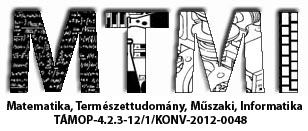The mechanical effects of heme-mediated oxidative stress in human cardiomyocytes: implications for diastolic function
Előadás adatai
Introduction: Heme molecules have vital roles in human biological processes. However, free-heme is also a potential oxidative agent which can produce a direct oxidative effect on essential components of cells like lipid, protein, DNA molecules. Moreover, the oxidative effect of heme can be also produce indirectly via heme-derived hydrogen peroxide (H202). In heart failure or ischemic reperfusion injury, there are excess amount of reactive oxygen species which are responsible for the contractile dysfunction of the heart. In these situations, free-heme molecules might participate in cardiomyocyte dysfunction. The aim of this study is to explore the effect of free-heme molecules on the passive force of human cardiomyocytes.
Method: We use isolated human cardiomyocytes which are permeablized by Triton X-100 detergent to get rid of all the plasma membrane to obtain only the contractile filament network. These permeablized cells are then mounted in experimental set-up for direct force measurements (sarcomere length 2.3 µm; n=15). Ca2+-independent passive forces (Fpassive) are then measured. Fpassive is measured before and after 20 minute long incubations in relaxing solution with in the increasing heme concentrations (1µM-100µM) with or without added H202 (30µM) and/or the antioxidant DTT (10mM).
Result: The Fpassive is increased with increasing heme concentration. At heme concentration of 100µM (without H202), Fpassive is 568±61% (p≤0.05, n=8) of those of heme-free control. Whereas when we add H202, Fpassive is 456±71% of those of heme-free controls. The increase in Fpassive at 20µM heme concentrations can be partially reversed (by 42.5±4.13%) by DTT (p≤0.05, n=5) because DTT reduces the oxidized sulfhydryl groups of contractile filament proteins (as showed by parallel Ellman assays).
Conclusion: Our study would suggest that heme would disturb the structures of contractile filaments which in turn lead to the increase of Fpassive of the cell. This effect would show the role of heme in the diastolic dysfunction cardiomyocyte in oxidative stress condition like ischemic reperfusion injury or heart failure.
Támogatók: Támogatók: Az NTP-TDK-14-0007 számú, A Debreceni Egyetem ÁOK TDK tevékenység népszerűsítése helyi konferencia keretében, az NTP-TDK-14-0006 számú, A Debreceni Egyetem Népegészségügyi Karán folyó Tudományos Diákköri kutatások támogatása, NTP-HHTDK-15-0011-es A Debreceni Egyetem ÁOK TDK tevékenység népszerűsítése 2016. évi helyi konferencia keretében, valamint a NTP-HHTDK-15-0057-es számú, A Debreceni Egyetem Népegészségügyi Karán folyó Tudományos Diákköri kutatások támogatása című pályázatokhoz kapcsolódóan az Emberi Erőforrás Támogatáskezelő, az Emberi Erőforrások Minisztériuma, az Oktatáskutató és Fejlesztő Intézet és a Nemzeti Tehetség Program



